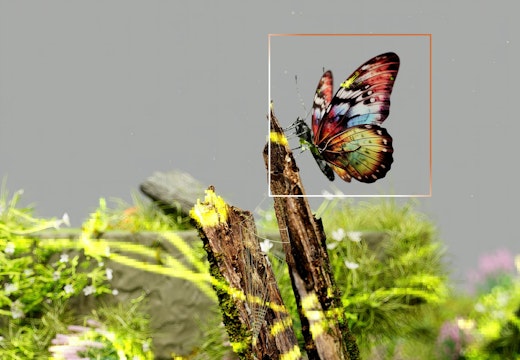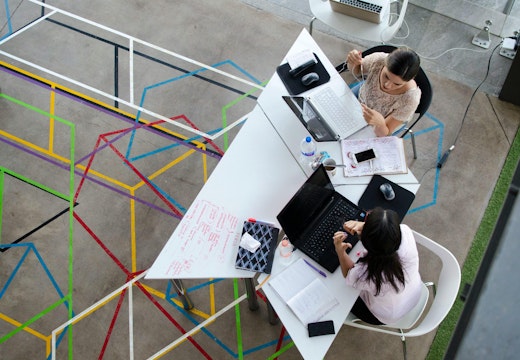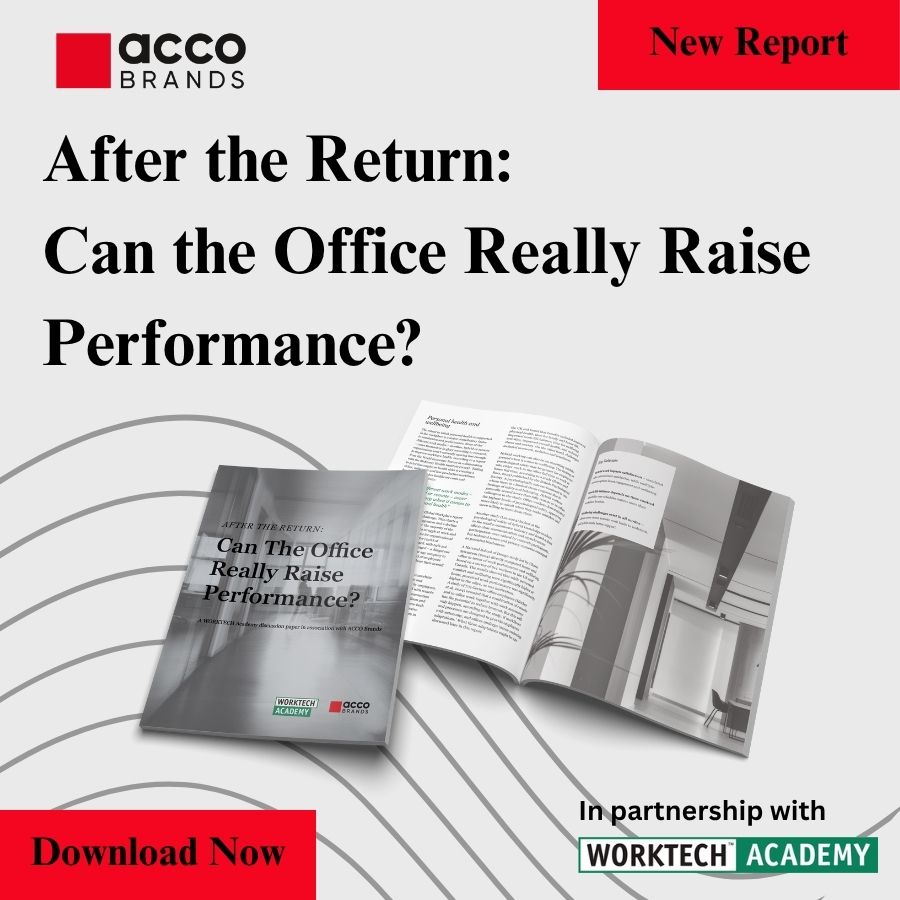Why moderate visual complexity lets our brains work better
New research from a Dutch research team has reopened a familiar design debate about how cluttered and visually complex a workplace interior should be. The answer: not so much
Humans devote a tremendous amount of their brain’s information processing power to deciphering what’s happening visually in the world around them.
Study after study shows that people are most comfortable – and their cognitive performance and wellbeing are optimised – when the world around them is moderately complex visually. Then, they can make sense of their surroundings without shifting mental energy away from concentrating on the task at hand to process incoming visual data.
Research suggests that visual complexity increases as the number of colours, patterns, shapes, and so on present in two and three dimensions goes up, and the apparent order or symmetry with which these elements are arranged goes down (for example, Oliva, Mack, Shrestha, and Peeper, 2004; Nadal, Munar, Marty, and Cela-Conde, 2010; Chen, Wu, and Wu, 2011; Leder and Tinio, 2014). Residential interiors designed by Frank Lloyd Wright are prime examples of moderate visual complexity (Vaughan and Ostwald, 2014), as shown, for example, here.
Colour variety preferred
New research from the Netherlands by Eline Van Geert and colleagues (in press) studied preferences for generating variety via three different design elements (numbers of colours, shapes, and item sizes). The online study collected ratings of complexity and beauty from 80 participants. The researcher learnt that variety of colour was on average preferred, whereas variety of size and shape influenced preferences negatively.
Secondly, all three types of variety were more often preferred in stimuli of moderate visual complexity than in stimuli with less order. Overall, the results indicated an overall preference for colour variation and a dislike of size variation but especially shape variation.
Improved cognition
Previous research on visual complexity has determined, for example, that cognitive performance improves and creativity increases in spaces with moderate visual complexity (for instance, McCoy and Evans, 2002; Ceylan, Dul, and Aytac, 2008; Vohs, Redden, and Rahinel, 2013). People prefer areas that are moderately visually complex (Berlyne, 1971; Forsythe, Nadal, Sheehy, Cela-Conde and Sawey, 2011).
Having preferred experiences has been tied to improved mood, which in turn supports enhanced problem solving and creative thinking, and smooths our interactions with others. Jutzi, Moller, Hansen, Klacki, and Jonas (2025) assessed how workplace design can enhance psychological wellbeing. Participants indicated that they felt more competent, autonomous, and related to others in more cluttered environments than in empty ones. The spaces that the Jutzi-led team classified as cluttered had moderate visual complexity; uncluttered areas had low visual complexity.
High levels of visual complexity increase how activated viewers feel, often generating conditions in which people are stressed: their cognitive performance declines, and they do not interact pleasantly with other people (for instance, Mahnke, 1996). High energy levels can be a plus at physical fitness centres but not when people are concentrating in offices, for example.
Overwhelming our brains
The findings noted above are neatly summarised in an article by Renner (2020) which quotes Sabine Kastner, a professor at Princeton, reporting on her work: ‘“Many of us aren’t good at processing clutter,’ says Kastner. “It can become overwhelming and make our brains do more work to complete simple tasks.” The more conflicting stimuli we’re dealing with, the more our brain has to work to filter out what we need. When you take away this strain on our brains from competing objects, focusing becomes much easier.’
Designing for moderate visual complexity seems like a challenge, but with an image of a Frank Lloyd Wright residential interior tucked top-of-mind it can be pretty straightforward—and well worth the effort.
Read more of the latest research insights from Sally Augustin in Research Roundup, her regular column in the Innovation Zone for WORKTECH Academy members and partners here.
Research sources
Daniel Berlyne. 1971. Aesthetics and Psychobiology. Appleton Century Crofts: East Norwalk, CT.
- Ceylan, J. Dul, and S. Aytac. 2008. ‘Can the Office Environment Stimulate a Manager’s Creativity?’ Human Factors and Ergonomics in Manufacturing, vol. 18, no. 6, pp. 589-602.
Chien-Chung Chen, Jo-Hsuan Wu, and Chia-Ching Wu. 2011. ‘Reductions of Image Complexity Explains Aesthetic Preference for Symmetry.’ Symmetry, vol. 3, no. 2, pp. 443-356.
- Forsythe, M. Nadal, N. Sheehy, C. Cela-Conde, and M. Sawey. 2011. ‘Predicting Beauty: Fractal Dimension and Visual Complexity in Art.’ British Journal of Psychology, vol. 102, pp. 49-70.
Chiara Jutzi, Julius Moller, Jochim Hansen, Johannes Klacki, and Eva Jonas.2025. ‘Psychological Needs in the Built Environment.’ Journal of Environmental Psychology, vol. 101, 102419.
Helmut Leder and Pablo Tinio. 2014. ‘Experimental Aesthetics.’ In Jon Lauring (ed.) An Introduction to Neuroaesthetics: The Neuroscientific Approach to Aesthetic Experience, Artistic Creativity, and Arts Appreciation. Tusculanum Press: Copenhagen, Denmark, pp. 51-69.
- Mahnke. 1996. Color, Environment and Human Response. Van Nostrand: Reinhold, NY.
Janetta McCoy and Gary Evans. 2002. ‘The Potential Role of the Physical Environment in Fostering Creativity.’ Creativity Research Journal, vol. 14, no. 3-4, pp. 409-426.
- Nadal, E. Munar, G. Marty, and C. Cela-Conde. 2010. ‘Visual Complexity and Beauty Appreciation: Explaining the Divergence of Results.’ Empirical Studies of the Arts, vol. 28, pp. 173-191.
Aude Oliva, Michael Mack, Mochan Shrestha, and Angela Peeper. 2004. ‘ Identifying the Perceptual Dimensions of Visual Complexity of Scenes.’ In K. Forbus, D. Gentner, and T. Regier (eds.) Proceedings of the 26th Annual Cognitive Science Society, Cognitive Science Society: Austin, TX, pp. 1041-1046.
Rebecca Renner. 2020. ‘Why Pandemic Stress Breeds Clutter—And How to Break the Cycle.’ National Geographic.
Eline Van Geert, Astrid Warny, and Johan Wagemans. ‘A Systematic Approach to Study Preferences for Complexity at Different Levels of Order.’ Psychology of Aesthetics, Creativity, and the Arts, in press.
Josephine Vaughan and Michael Ostwald. 2014. ‘Quantifying the Changing Visual Experience of Architecture.’ In F. Madeo and M. Schnabel (eds.). Across: Architectural Research Through to Practice: 48th International Conference of the Architectural Science Association. The Architectural Science Association and Genova University Press, pp. 557-568.
Kathleen Vohs, Joseph Redden, and Ryan Rahinel. 2013. ‘Physical Order Produces Healthy Choices, Generosity, and Conventionality, Whereas Disorder Produces Creativity.’ Psychological Science, vol. 24, no.9, pp. 1860-1867.








